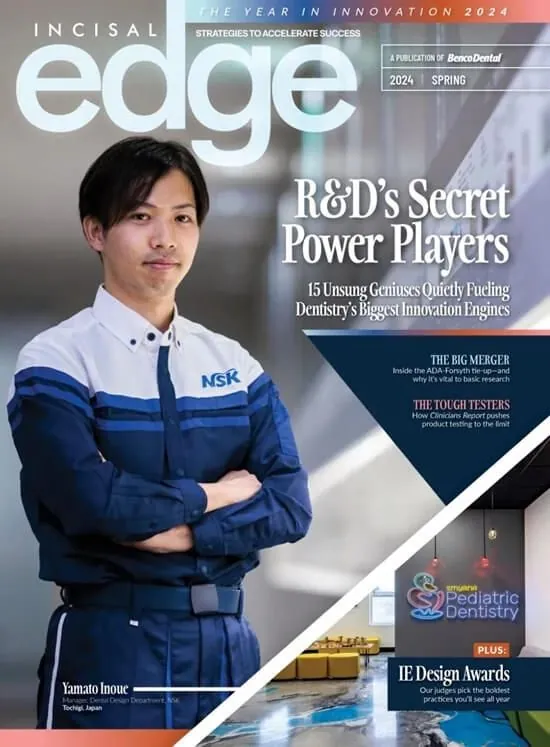Later this year, Chicago will host the annual Lucy Hobbs Celebration gala, A tribute to women in dentistry. The whole big-shouldered city is gala, of course—and tackling it like a local will make your time there even better.
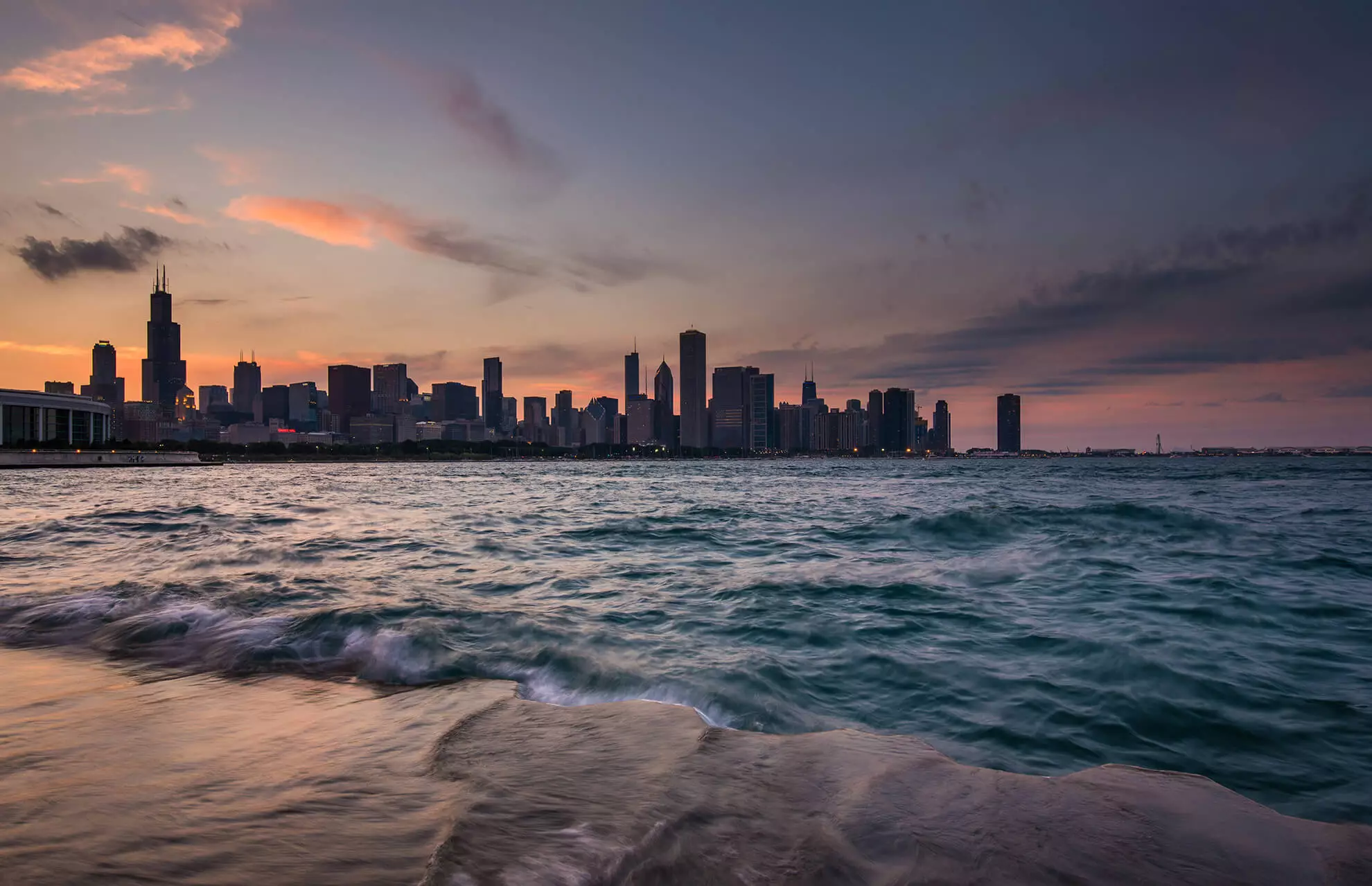
MAKING WAVES: Chicago from the shores of Lake Michigan. Turn some lights on, folks!
YOU MAY THINK you know Chicago: the bone-cutting cold, the carbohydrate-and-cheese behemoth we call pizza, Da Bears. And though we’ve heard every deep-dish insult you could possibly lob our way, you’re not wrong. But there’s so much more to love in the Midwest’s largest city: gorgeous architecture, verdant parks, sparkling lake views and world-class food.
Chicago is a place that can feel like both a global destination and a small town all in the span of just a few blocks. It’s little wonder the annual Lucy Hobbs Celebration is being held here this October—every attendee of this extravaganza, which lauds the achievements of women in dentistry, will find something worth discovering. (Even, dare we say it, exceptional thin-crust pies.)
The best way to fall in love with the city is to start in the heart of it, commonly referred to as the Loop thanks to the ring of elevated train tracks that gird it. This happens to work out well for Lucy attendees: Event programs are slated for the historic Blackstone hotel, whose sweeping lobby windows overlook Grant Park (Michigan Avenue between Randolph and Roosevelt Avenues), Chicago’s great green achievement. Contained in its 300-plus acres: the ornate Buckingham Fountain, the more than 300,000-piece permanent collection of the Art Institute of Chicago (111 S. Michigan Ave.) and, in the northwestern corner known as Millennium Park, the Bean (the silvery Anish Kapoor sculpture and selfie magnet whose given name is “Cloud Gate”). Those are the hits, but Grant Park rewards wanderers with superb people-watching and quiet corners aplenty.
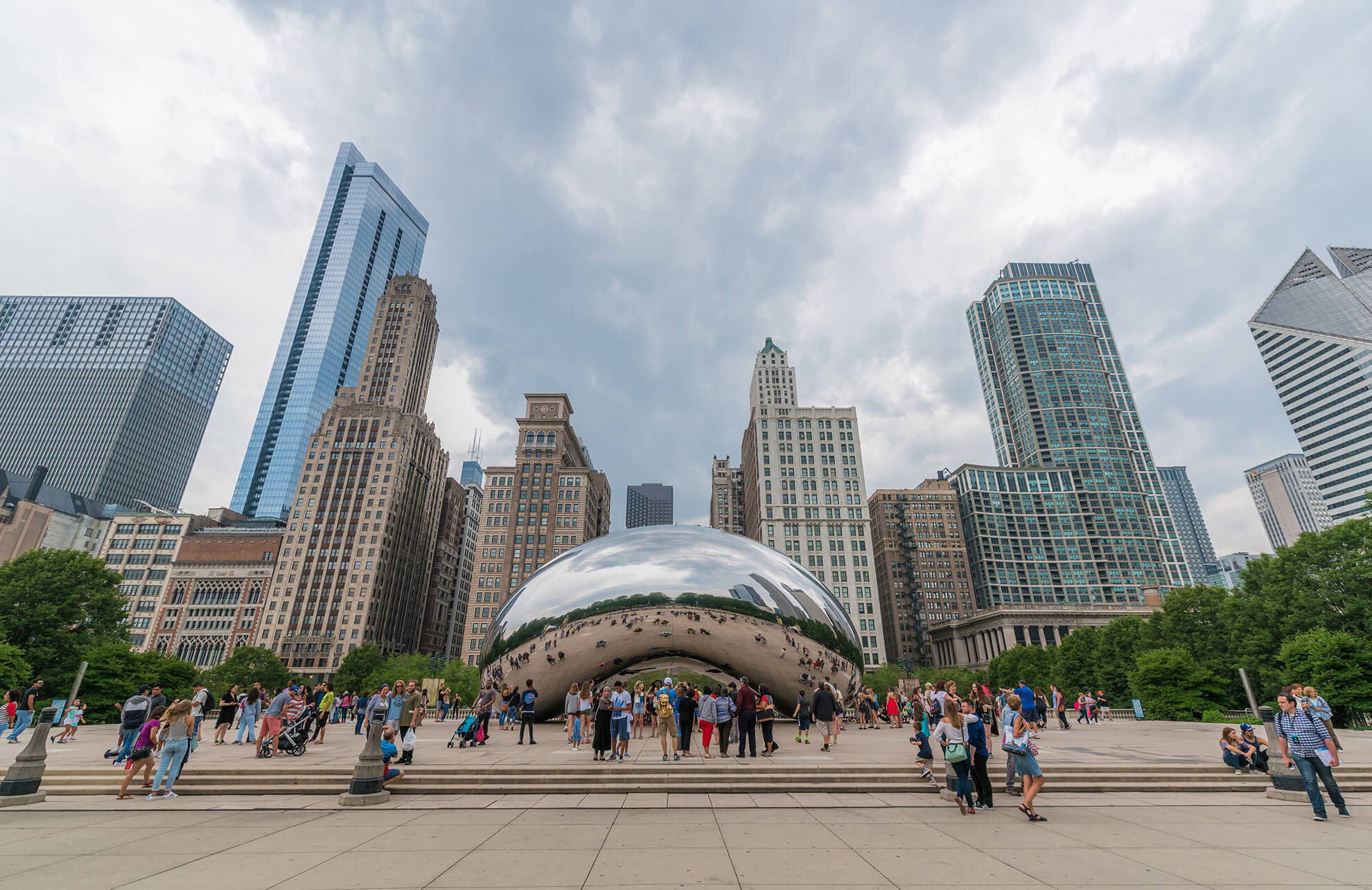
BEAN THERE, DONE THAT: Anish Kapoor’s famed selfie magnet “Cloud Gate”
While you’re there, be sure to look up: We take pride in our diverse skyscrapers, from the gilded Carbon & Carbide Building (now the St. Jane Hotel, 230 N. Michigan Ave.) to the sea-foam-green structure at 333 West Wacker. The Chicago Architecture Center’s new home (111 E. Wacker Drive) gives an outstanding overview of our built history and serves as a starting point for walking tours, with deeply informed docents guiding you through the development of downtown. If you’d rather sit, just cross the street—the Architecture Center also offers boat tours that float leisurely along the Chicago River.
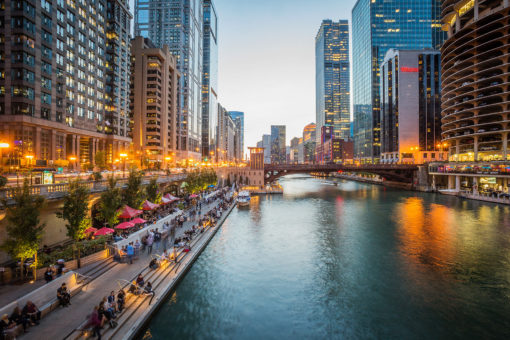
OUTSIDE CHANCE: Go alfresco (in nice weather, at any rate) along the Chicago River
Cross the river and you’ll arrive at the Magnificent Mile, a stretch of Michigan Avenue best known for its large flagship stores and one of the busiest tourist thoroughfares. But if you’d rather do your crowd-surfing with your stomach, indulge in an alluring glass of Spanish red wine and freshly shaved Iberico ham at the Purple Pig (500 N. Michigan Ave.), constantly packed with travelers and locals alike.
One thing about dining in Chicago: Most of our treasured restaurants aren’t clustered downtown. We like to refer to our town as a “city of neighborhoods,” and residential areas tend to boast some of the finest dining options (and fiercely loyal patrons). There are plenty of great choices in the city’s center: Rick Bayless’s rollicking Frontera Grill and more intimate Topolobampo (both at 445 N. Clark St.), top-flight (and expense account–ready) steakhouses such as Bavette’s Bar & Boeuf (219 W. Kinzie St.) and RPM Steak (66 W. Kinzie St.), and brunch master Beatrix (519 N. Clark St.) Also, if you must get a deep-dish pie, your destination is Labriola (535 N. Michigan Ave.): The crust snaps without ever turning too soggy, and the fennel-flecked Italian sausage trounces what you’ll find at the big-name competition.
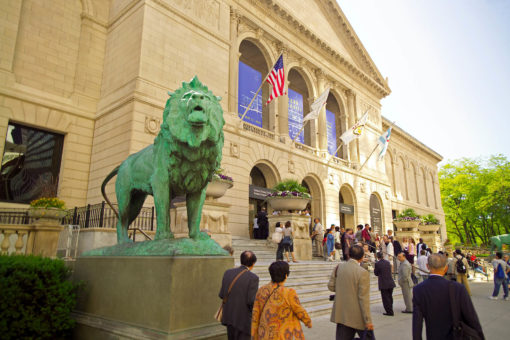
HEP CAT: The renowned Art Institute in Grant Park
But if you want to eat like a local, you’ll want to venture out. A couple of neighborhoods in particular make for great culinary destinations, like the West Loop, just west of downtown. Once the city’s stockyard hub, it’s now a magnet for trend-setting chefs. Randolph Street is its main artery, but you’ll also find great dining options on Lake Street (it’s the one that runs beneath the L tracks) and Fulton Market Street.
We’re not idly bragging when we say that one of the country’s best burgers comes from the corner of Randolph and Halsted. Au Cheval (800 W. Randolph St.) grills up a thin-pattied masterpiece, made even better when crowned with thick-cut bacon and a perfectly runny fried egg. If you’re not in the mood to wait the four hours (yes, you read that right) it takes for your table to be ready by imbibing at a nearby bar like Lone Wolf (806 W. Randolph St.), we’ll let you in on a little secret: Most of us are just as fond of the burger at The Loyalist (177 N. Ada St.), which is like what a Big Mac would be if a Michelin-starred chef ran the grill at McDonald’s.
The current heart of innovative (and relatively affordable) eating and drinking, though, is in Logan Square, a 20-minute ride north on the Blue Line. It can be a bit of a Millennial playground—you could make a very dangerous drinking game out of counting all the semi-ironic mustaches sported around these parts—but its charm is undeniable. Eating at Lula Café (2537 N. Kedzie Ave.) is a rite of passage for transplants here. Chef Jason Hammel is one of the patron saints of our farm-to-table movement, and he knows how to extract purely pleasurable flavors from local produce. If you come for dinner, stick around for a drink: It’s a sleeper pick for fine cocktails.
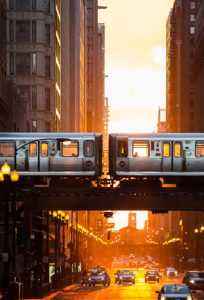
EL OF A TOWN: Trains aloft, encirclingtheLoop
If you want to keep boozing, Estereo (2450 N. Milwaukee Ave.) is the place to be, where a vibrant crowd mingles over fruity mezcal-spiked cocktails. (Make sure you check out the disco-ball bathroom, too.) And for some pizza to sop up the drinks, Paulie Gee’s (2451 N. Milwaukee Ave.) beckons from just across the street. Order whatever wildly inventive, sort-of-Neapolitan-style pie is on special, especially if it comes with a drizzle of fiery hot honey over top of it.
Sure, we’ve got award-winning museums and a vibrant theater scene. But at the end of a long day of mingling (and after a few local brews), you might just want to laugh. Second City (1616 N. Wells St.) is known as the spiritual home of improv comedy, and its Main Stage shows tend to sell out fast. If you still want to catch the future stars of Saturday Night Live, it’s worth seeing if you can snag a spot in the more intimate (and more affordable) e.t.c. Theater in the same building—the shows tend to be looser, if not also a little raunchier, and performers feed off the energy of the locals-only crowd.
We want you to take advantage of all Chicago has to offer, but if we could convince you to do one thing while you’re in Chicago, it’s this: Wake up somewhat early and take a stroll along the 16.9-mile Lakefront Trail, which stretches from the city’s far northern end to its southern tip (and runs parallel to Grant Park during its downtown stretch). Walking along the lake in the morning quiet, watching choppy waters lapping against the concrete barriers and the golden-pink sunrise reflecting off the glassy downtown, is Chicago’s greatest charm. We’d trade deep-dish pizza for it any day.
CARRIE SCHEDLER is the senior dining editor for Chicago magazine. This is her first piece for Incisal Edge.
